- Joined
- Jun 2, 2008
- Messages
- 1,230
SOURCE
The combat helmet is one of the oldest pieces of military equipment still used on the battlefield. Now, after years of upgrades, the U.S. Army is planning what may be the most startling one yet: a helmet-mounted radar to give soldiers an all-round warning of urban threats.
Specifically, the Helmet Mounted Radar System (HMRS) program calls for:
a miniature, low power, near 360-degree field of view Moving Target Indicator (MTI) radar sensor that will alert the soldier to the whereabouts of a target out to at least 25 meters. The sensor is to be mounted, embedded, and integrated within the Advanced Combat Helmet and associated sensor suites.
Radar can see through fog, smoke and dust, and works just as well in pitch darkness. Which could make it pretty useful for catching creeping adversaries. The HMRS might also have some other useful features; the ability to see through foliage, and the ability to see through walls, are described as “desired” capabilities for the HMRS rather than requirements.
The HMRS description also encouragingly specifies that “the effective radiated power of the system has to be low enough not to affect the health of the soldier” -– and presumably not the other members of the squad either, who are likely to be lit up by each other’s radar from all directions. Anyone worried by cellphone radiation emissions need not apply, tinfoil helmet liners optional.
The whole system should weigh less than two and a half pounds, with less than a pound of that being mounted on the helmet. This is not as ambitious at it might sound; a few years ago, ImSAR and Insitu developed a Micro Miniature Synthetic Aperture Radar weighing two pounds called NanoSAR. It included a Moving Target Indicator. NanoSAR has a range of over a kilometer, but its fifteen-watt power consumption would eat up batteries if left on continuously.
And that’s just one of the many questions about how the radar will work in practice. As well as 360-degree horizontal coverage, what’s the vertical? If you tilt your head up or down do you lose coverage? There is also the question of how the system should pass on information to the user, which should be answered in the Phase I part of the project. Something like a heads-up display might be too much to cope with; but perhaps and audible tone or a simple LED display might be all that’s needed.
(For some reason those radar Motion Trackers used in the movie Aliens come to mind – but those were comparatively big and clumsy and only gave 180-degree coverage.)
The HMRS will be constantly set off by friendly troops, who are likely to be nearer than the enemy. And it might also be triggered by any number of other moving objects, such as tree limbs blowing in the wind. Development is likely to take several years, and it may end up as another one of those useless additional weights that nobody want to carry around… but it might just turn out to be a life-saver.

